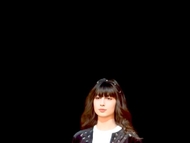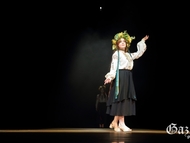 A “gache” is a women's traditional hair style that uses false hair to make them look beautiful. There are two kinds of gache. One kind has false hair worn on the wearer’s head, and the other braids false hair together with the wearer’s own hair. A gache weighs about 3~4kg, including decorations. Gaches come in a variety of sizes and are decorated with different jewels. There are many kinds of gaches, including eoyeo-meori, cheobgi-meori, daisu, and keun-meori.
A “gache” is a women's traditional hair style that uses false hair to make them look beautiful. There are two kinds of gache. One kind has false hair worn on the wearer’s head, and the other braids false hair together with the wearer’s own hair. A gache weighs about 3~4kg, including decorations. Gaches come in a variety of sizes and are decorated with different jewels. There are many kinds of gaches, including eoyeo-meori, cheobgi-meori, daisu, and keun-meori.Gaches have existed since the Silla Dynasty period. In the latter half of the Goryeo Dynasty period, when Mongolia’s customs were popular, gaches became popular in the court. In the Joseon Dynasty period, gaches became popular among women of all classes whether they were rich of poor. Gaches became very fashionable and became too expensive for poor women. To buy gaches, nobleman and rich people spent hundreds of pieces of gold, while poor people sold their houses and rice fields. Gaches received much recognition and became bigger, higher, more splendid and more luxurious.
All brides had to prepare a gache. A bride without a gache, even after several years, was forbidden to enter her husband’s house. One day, a bride greeted her father-in-law and broke her neck. She died because she wore a gache that was too big. This accident was terrible. Yeongjo gave strict orders that women must wear chokduris, a kind of hat, instead of gaches. But chokduris also became more luxurious. Later Jeongjo issued a stronger ban of gaches. Around the reign of Sunjo, gaches began to disappear.








